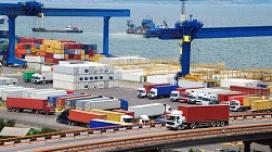Insights into Nation’s Freight System Could Shape New Surface Transportation Legislation
The American freight system of decades ago was clear-cut. Steel from Pittsburgh went to make cars in Detroit. Coal in West Virginia mines went to power plants a few miles away. The supply chain was relatively simple, and local. Today, supplies and finished goods move from coast to coast; everywhere in between; between ports, railroads, and airports; and across borders.
Despite the complexities of modern freight, we know the system in America works, and works well. Every day, countless supplies make it to factories where they are turned into products, and products make it to stores where they are sold. But systematic knowledge about the freight system is lacking. Having that knowledge is key to identifying the most critical parts of the American freight system and ensuring that it meets the nation’s transportation needs and supports our economic future.
Mortimer Downey III, vice-chair of the National Freight Advisory Committee (NFAC), spoke at Volpe on June 16 about how insights into the nation’s freight system may shape new surface transportation legislation. He also spoke about NFAC’s mission to find consensus on specific areas where the nation’s freight network can become safer and more efficient.
A Platform for Knowledge
The Moving Ahead for Progress in the 21st Century (MAP-21) Act included significant provisions meant to improve the nation’s freight network—a first for federal transportation legislation. NFAC’s 47 members, from outside the Department of Transportation, use these policy guidelines to steer their work.
“These provisions created a platform, from our standpoint, to say, ‘OK, what’s next?’ How do we make freight part of the national transportation legislation and how do we fund it?” Downey said.
NFAC members work within all parts of the freight system and represent various transportation modes, geographic regions, and policy areas. They include elected officials, freight customers and providers, labor representatives, safety experts, and government entities. Through meetings and with public input, NFAC produced 90 areas of consensus—elements of the freight system that the committee believes deserve more attention in federal funding, Downey said. These elements will be explained in detail in an upcoming report.
“We looked at safety issues, we looked at how to make a multimodal network, we said a lot more needs to be done in terms of streamlining the process in order to deliver these projects, and more data is needed. We need to understand technology better,” said Downey. “We don’t provide answers. We throw out there that if the U.S. Department of Transportation wants to create a strategic plan for freight, here is what needs to be done.”
Moving Toward a Multimodal Freight Network
NFAC’s work is an important step in ensuring a strong freight transportation system—one that can support the nation’s goal of significantly increasing exports.
The companies and people who move freight across America aren’t the only ones who matter, Downey said. Freight movement is part of a larger system that includes producers and shippers. A goods producer might be most interested in making sure that supplies arrive reliably—at the time they are supposed to and in the correct quantity—rather than speed or cost, Downey said. Understanding the diverse perspectives in freight transportation is a big part of why NFAC was formed.
For now, Downey suspects that a short-term extension for federal transportation funding is likely—but the big question remains: How will Congress find consensus on long-term investments for multimodal freight movement? Holistic insights about all the moving parts of America’s freight network will help resolve that question and can help legislators pinpoint funding priorities for future federal transportation bills.

